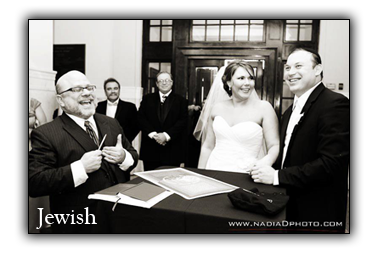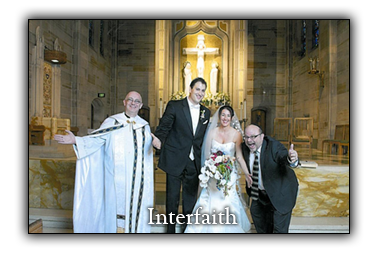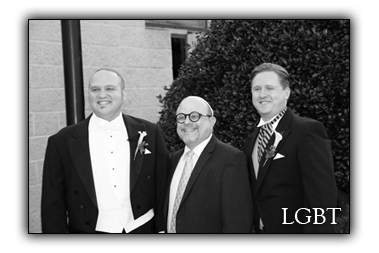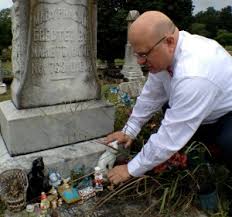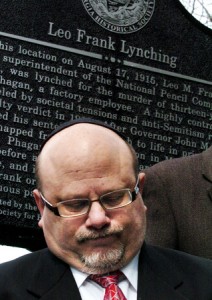Rabbi’s Bulletin Column, June 2015
Falsely Accused, Wrongly Tried, Wantonly Murdered
Leo Frank was innocent.
Those four words have eluded polite conversation in Atlanta for almost a century. Frank, the superintendent of the National Pencil Factory, was accused of murdering 13 year-old Mary Phagan a century ago. On an April day in 1913 Phagan took the trolley from Marietta to midtown Atlanta to collect her paycheck. She was never seen alive again.
 Her lifeless body was found at the bottom of an elevator shaft in the factory. The last man to admit seeing her alive was Leo Frank, a transplanted New Yorker, now living in the south.
Her lifeless body was found at the bottom of an elevator shaft in the factory. The last man to admit seeing her alive was Leo Frank, a transplanted New Yorker, now living in the south.
At first the police arrested a half dozen men whom they thought had committed the crime. Lacking any evidence, the police released all of the suspects they were holding. Without a suspect the Atlanta police turned their gaze upon Frank. As a Jew from Brooklyn he must have seemed a suspicious outsider.
Frank had an alibi and there was no forensic evidence to tie him to the crime. There were no witnesses to the ostensible murder until Jim Conley, the factory janitor, claimed that he had seen Leo Frank with Mary Phagan.
The prosecution produced a few female witnesses who claimed that Frank had once ogled them. The witnesses had been coached by the Atlanta police and under cross-examination they eventually recanted. The Leo Frank trial and its appeal dragged through the courts for two years. The case went as high as the U.S. Supreme Court, where three of the judges, the minority report, argued to release Frank.
After his appeals were exhausted Frank was scheduled for execution in 1915. Behind the scenes the lawyer for Jim Conley came forward and declared it was his own client, and not Frank, who was guilty. Hundreds of Protestant ministers wrote to the governor to argue for Frank’s innocence.
A few weeks before Frank’s execution date the most courageous politician of the era, Governor John Slaton, commuted Frank’s death sentence to life in prison in order to give Frank’s attorneys more time to prove his innocence.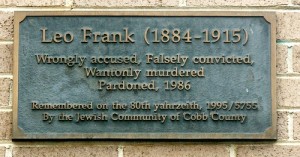
As soon as Governor Slaton commuted the Frank sentence his life was threatened by an Atlanta mob, who stormed the governor’s mansion. The Georgia National Guard had to be called out to save the governor from being murdered by his fellow Georgians.
That night, under the cover of darkness, Frank was spirited away to serve his term at the Georgia State Penitentiary in Milledgville Georgia.
On a hot August night a prestigious group from Marietta Georgia planned to break Frank out of prison.They drove all night on small country roads to find the prison where Frank was held. The warden of the prison willingly gave Frank to the lynch mob in an act that writer Steve Oney calls “state sponsored terrorism”.
They drove Frank to a small piece of land, a few blocks from where I now live in Marietta. The lynch party that day was planned and orchestrated by a former Georgia governor, two Georgia state representatives and various judges. The land that Leo Frank was lynched on actually belonged to the local sheriff who willingly colluded in the crime.
In 1984 an elderly gentleman name Alonzo Mann came forward to the press to announce that he had, in fact, seen Jim Conley, not Frank, with the murdered body of the young girl.
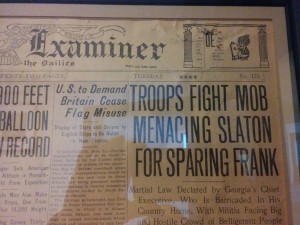 In 1986 the Georgia Board of Pardons and Paroles reluctantly granted a “posthumous pardon” to Frank. The pardon, they explained, did not exonerate Frank from the crime. It simply was based on the fact that Frank had been denied due process.
In 1986 the Georgia Board of Pardons and Paroles reluctantly granted a “posthumous pardon” to Frank. The pardon, they explained, did not exonerate Frank from the crime. It simply was based on the fact that Frank had been denied due process.
What has never been truly acknowledged by the state of Georgia or the city of Marietta is Frank’s innocence of any guilt in the murder of Mary Phagan. Over the last twenty years I have interviewed judges, prosecutors, and policemen. All of them have concurred that were Frank’s trial to be held today, the case would have been thrown out of court. There was never any evidence, no real eyewitness, no confession.
In 1995, on the 80th anniversary of Frank’s lynching I led a local group to the lot that I had identified as the actual site of the Frank lynching. I placed a simple plaque to the building nearest to the site of the lynching. I wrote the words to the plaque that simply read “Leo Frank- wrongly accused, falsely tried, wantonly murdered.”
This August will be the 100th yarhzeit (anniversary) of Leo Frank’s death. I will return to the lynch site, as I do every year on August 17, to say a simple kaddish (memorial prayer) for a man caught up in the anti-semitism and racism of his time.
Perhaps by then the State of Georgia or the City of Marietta will acknowledge one simple fact, just four words long.
Leo Frank was innocent.
Written by Rabbi Steven Lebow
For more information:
http://www.etgar.org/2005/06/atlanta-day-2/
http://en.wikipedia.org/wiki/Leo_Frank
http://www.georgiaencyclopedia.org/articles/history-archaeology/leo-frank-case
http://www.cnn.com/2009/CRIME/11/02/leo.frank/index.html?eref=rss_us
http://www.georgiaencyclopedia.org/articles/history-archaeology/leo-frank-case
